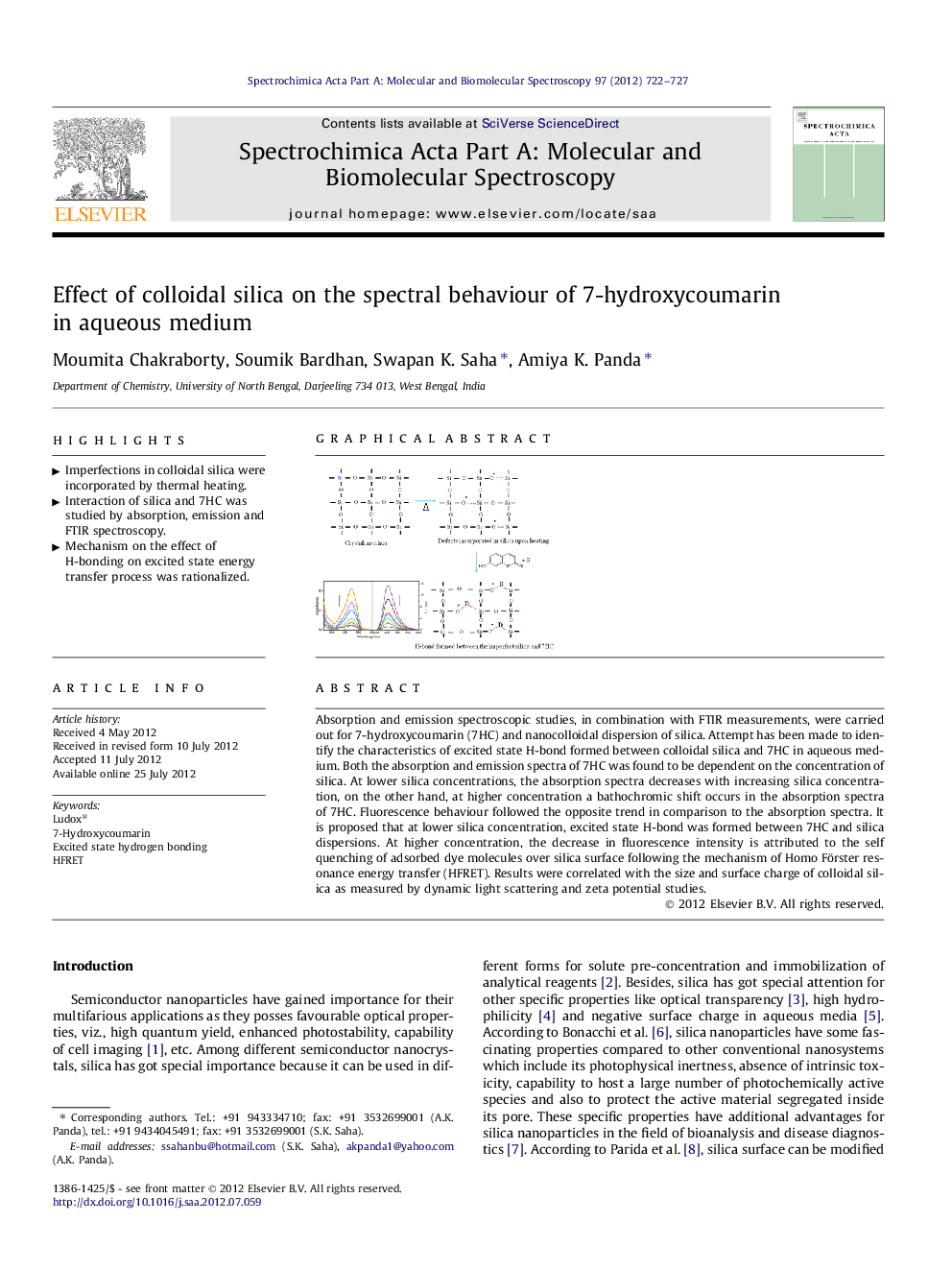| Article ID | Journal | Published Year | Pages | File Type |
|---|---|---|---|---|
| 1232369 | Spectrochimica Acta Part A: Molecular and Biomolecular Spectroscopy | 2012 | 6 Pages |
Absorption and emission spectroscopic studies, in combination with FTIR measurements, were carried out for 7-hydroxycoumarin (7HC) and nanocolloidal dispersion of silica. Attempt has been made to identify the characteristics of excited state H-bond formed between colloidal silica and 7HC in aqueous medium. Both the absorption and emission spectra of 7HC was found to be dependent on the concentration of silica. At lower silica concentrations, the absorption spectra decreases with increasing silica concentration, on the other hand, at higher concentration a bathochromic shift occurs in the absorption spectra of 7HC. Fluorescence behaviour followed the opposite trend in comparison to the absorption spectra. It is proposed that at lower silica concentration, excited state H-bond was formed between 7HC and silica dispersions. At higher concentration, the decrease in fluorescence intensity is attributed to the self quenching of adsorbed dye molecules over silica surface following the mechanism of Homo Förster resonance energy transfer (HFRET). Results were correlated with the size and surface charge of colloidal silica as measured by dynamic light scattering and zeta potential studies.
Graphical abstractFigure optionsDownload full-size imageDownload as PowerPoint slideHighlights► Imperfections in colloidal silica were incorporated by thermal heating. ► Interaction of silica and 7HC was studied by absorption, emission and FTIR spectroscopy. ► Mechanism on the effect of H-bonding on excited state energy transfer process was rationalized.
